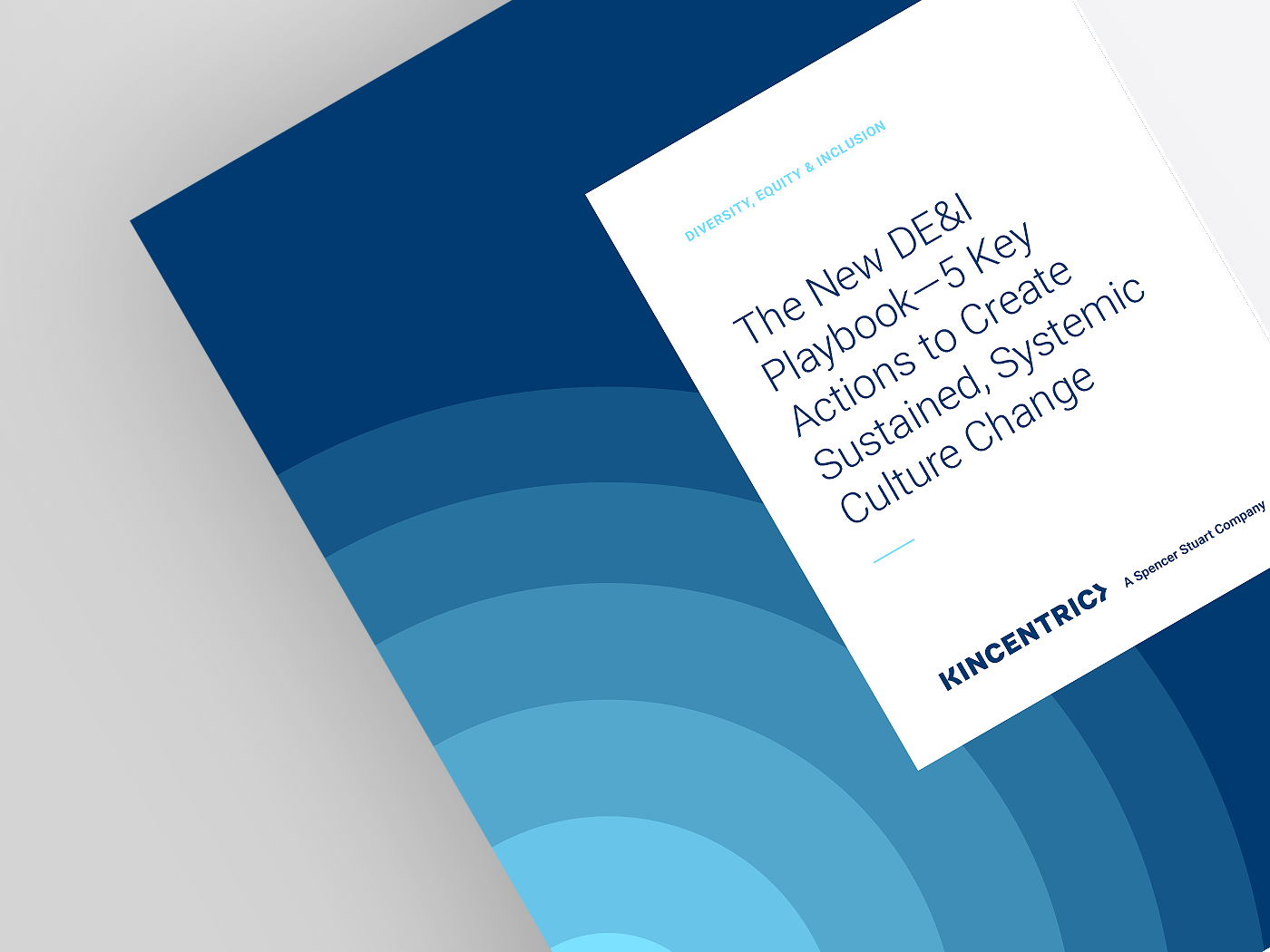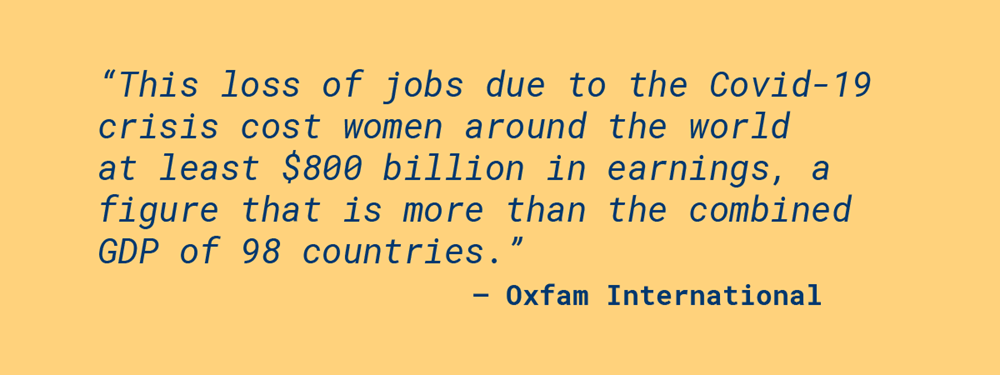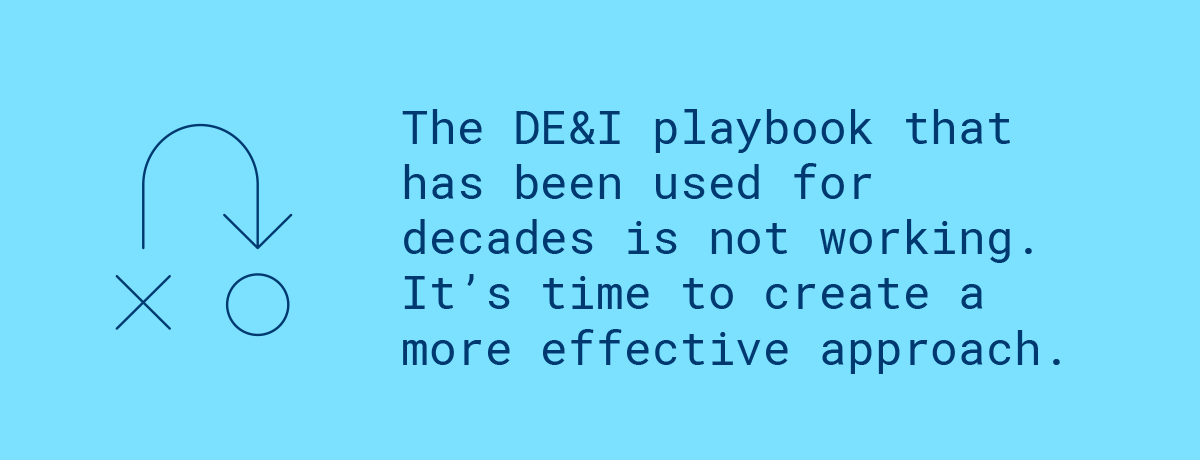
Over the last year and a half, we’ve witnessed chronic racial injustice incidents, a global health pandemic and the subsequent economic fallout, which has acutely impacted people of color and women in the workforce far out of proportion to the overall population. During this period, Black, LatinX, Asians, Pacific Islanders and Indigenous people have experienced disproportionately higher rates of infections, hospitalizations and deaths, and women globally have lost more than 64 million jobs in 2020 alone.
On the professional front, we’ll be feeling the impact of 2020 for a long time. In fact, the gender pay gap has increased so much that, according to the World Economic Forum, it’s now expected to take 135 years to close it. In short, we have been set back collective decades of work.

How have corporations responded? Plenty have publicly staked their position by donating to racial justice organizations and creating new DE&I leadership roles within their organizations. But even as people around the globe are seizing this moment to highlight systemic inequity and racial discrimination—and advocate for change—Fortune 500 CEOs in the United States remain a homogeneous group made up of mostly white males over the age of 50, and as you look further down the pipeline of these companies, diversity dwindles.
At the time of this writing, there are just two black female CEOs in the Fortune 500—an all-time high -- and diversity is no better in boardrooms.

Leader readiness to engage in meaningful DE&I work has intensified: 96% say that it’s a strategic priority for them. Employees, too, are becoming quite outspoken in their expectations for equity and diversity at all levels, and they’re demanding action from employers. As a result, many companies are focused on supporting employee activism and sending a broad message out into the world that they back DE&I efforts.
This is nice. But are they doing the genuine internal work?
Industry research has shown that even with billions of dollars spent on diversity training and programs, DE&I initiatives have been largely ineffective, and a vast gap exists between the rhetoric of diversity and inclusion and real results. While CEOs lament that DE&I is their top talent management priority, the DE&I playbook that has been used for decades is not working. It’s time to create a more effective approach.

DE&I efforts must be addressed holistically and strategically for companies to be successful. Organizations need scalable ways to transform their workplaces and drive real change to be more diverse, equitable and inclusive. In our work with clients, we know that there are five powerful actions organizations can take to begin to drive meaningful change from the inside.
DE&I has been around for decades. Most companies have executed various best practices yet have not seen significant outcomes from these investments. As we advise C-suites, the main DE&I issue is their frustration at the lack of visible diversity on executive teams, in succession plans and in the leadership pipeline.
To get different results, you need a different approach. We believe the single most important thing a company can do right now to get to the root cause of failed DE&I initiatives is to conduct an honest, “outside in” assessment of the current state around DE&I using a holistic, evidence-based approach.
Be sure to look beyond representation. By bringing all these data points together and repeatedly asking why, it’s possible to generate far more accurate hypotheses as to what is causing the lack of representation. You can begin to stitch together a “current state analysis”—a clear narrative that outlines what problems you need to solve in your organization. With that clear understanding and alignment, borne from an irrefutable evidence-based approach, you then have a clearly articulated north star for your DE&I efforts.
Perhaps we can all agree that bias and discrimination still exist in the workplace. Yet, certain questions embedded in standard engagement surveys around diversity and inclusion are often too broad and thus seem to indicate that there’s no problem. Listening sessions with colleagues may tell a very different story. To get at the real differences that matter in employee eXperiences, understanding gaps in perception among demographic groups, and between employees and leaders, is critical.
A DeX (Diversity eXperience) survey is one way to reconcile this anomaly and gain deeper insights at scale. In our DeX survey work, where we ask salient questions, we see gaps in how employees experience workplaces. Some report feeling unsafe both physically and psychologically. But when managers exhibit certain behaviors, such as creating an open environment where everyone can share their ideas and be heard, employees feel included and are more optimistic about their career opportunities. Bottom line: employees must believe their leaders are empathetic and experience inclusive behaviors in their day-to-day actions to feel valued. Achieving that level of inclusion remains elusive, even for organizations with deep commitments to DE&I.
To set direction, create alignment and solidify commitment to DE&I, it is critical to start at the top. Visible ownership of DE&I by the executive team is the first step to making a real commitment. For diversity and inclusion efforts to become an intrinsic part of the culture of a company, it must be leader-led at all levels of the organization.
At many organizations today, DE&I is viewed as an HR or learning and development initiative. It’s therefore hard to hold leadership accountable to preferred behaviors and culture-setting. Our advice to any company with an authentic desire to improve its DE&I efforts is to start with the leadership team, whose job is to articulate, with clarity, a future direction that makes sense for their business.
This means enlisting the executive team in a process of self-awareness and a deeper understanding of both their individual and their collective perspective and experience. Often, leaders think they are more culturally agile and inclusive than they are. True inclusion requires:
Unequivocally, DE&I is a leadership issue that requires great fortitude. When leaders role-model inclusive behaviors every day, they cast a huge shadow that shapes the culture. It is simply a game changer.

For DE&I to be sustainable, it must be ingrained in the company’s core culture, starting with its values. In the development of value statements, it’s essential to be intentional about the link to DE&I behaviors. This might sound obvious, but in our assessments, we often find that DE&I is missing from corporate value statements, or that while a company might consider inclusion to be a value, it’s relegated to being reinforced only in employee and PR materials. It’s common for DE&I statements to exist as separate entities from the organization’s values and vision — a standalone program that’s only supported by some.
In our work with clients, we hear executives clamor for ways to influence DE&I outside of check-the-box activities. But in our assessments, we often see cultures of conformity where fitting in is necessary for success and advancement. The rhetoric of DE&I circles— fostering a more inclusive culture where people can be their authentic selves — must be actualized. While many organizations are hosting a lot of courageous conversations to help foster an inclusive culture, what’s missing are the clearly defined behaviors that are expected by everyone in the organization.
For example, one of our client’s leadership teams was intentional in defining company values, but they also went further and defined the associated behaviors expected by leaders to create bold innovation. Specific behaviors include:
These behaviors are also being embedded into their performance management process because they are at the heart of the type of culture the CEO wants to boldly innovate. By measuring performance on these behaviors, the CEO is making DE&I a core component of the organization’s culture – one with rewards and consequences.
DE&I must be embedded into everything. It must be at every touchpoint of the employee eXperience, intrinsic in the culture, and a part of how you go to market and how you do business. The DE&I strategy must be communicated and shared with all stakeholders, from the boardroom and C-suite to all leaders and employees within the organization so everyone understands, owns and drives it.
Organizations that want to succeed must be change- ready. The human element of the change equation with DE&I—helping people feel emotionally safe, understood, connected and empowered—is complicated and warrants the development of a comprehensive change management strategy. This component is often missing in DE&I efforts, causing DE&I departments to lament that changes are not going well because people are “resistant.”
Our research has shown that successful change management strategies are designed with individual reactions and outcomes in mind. Kincentric’s change management model organizes these as follows:
We often see organizations fail time and time again simply because people do not understand the change, and that cultural and organizational barriers to change are never fully dismantled.
DE&I is at a crisis point. This is a complex problem, and unfortunately, there is no off-the-shelf quick remedy. Changes won’t happen overnight. And while it may seem easier to simply replicate DE&I best practices, companies must invest in the hard work and take the right organizational actions to make real progress on DE&I.
We believe now is the time to shift our collective thinking about DE&I and create a sustainable, strategic approach, focused on behavior change, woven deeply through every company’s culture and modeled from the top. Unlocking the power of people and teams requires a shift in mindsets, behaviors and practices toward more equitable, diverse and inclusive teams and organizations to achieve business success.
Want the latest insights delivered straight to your mailbox?